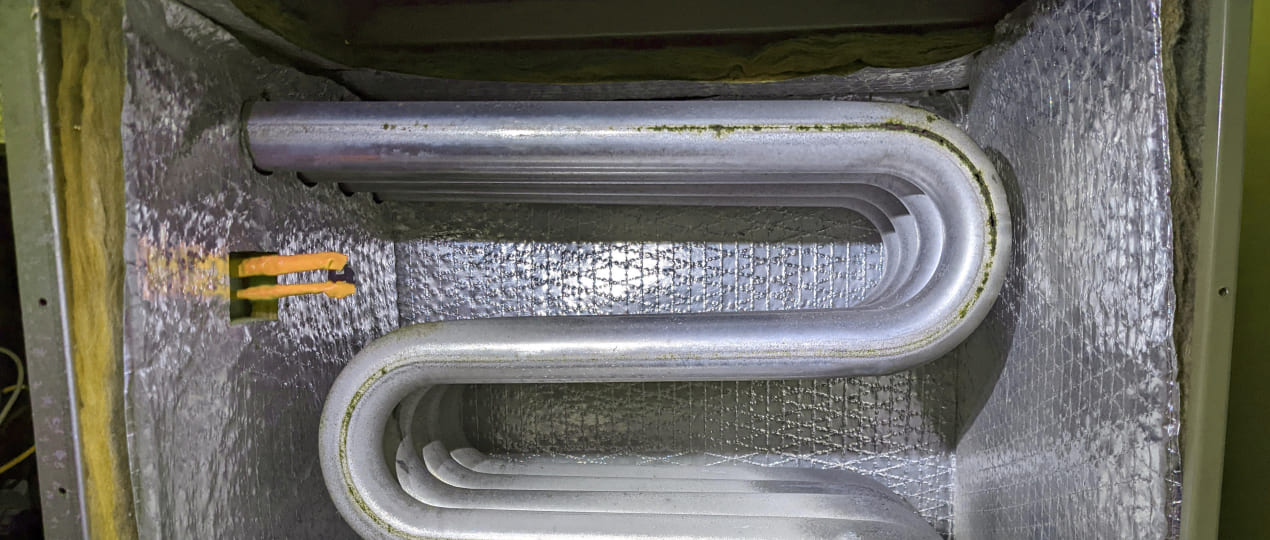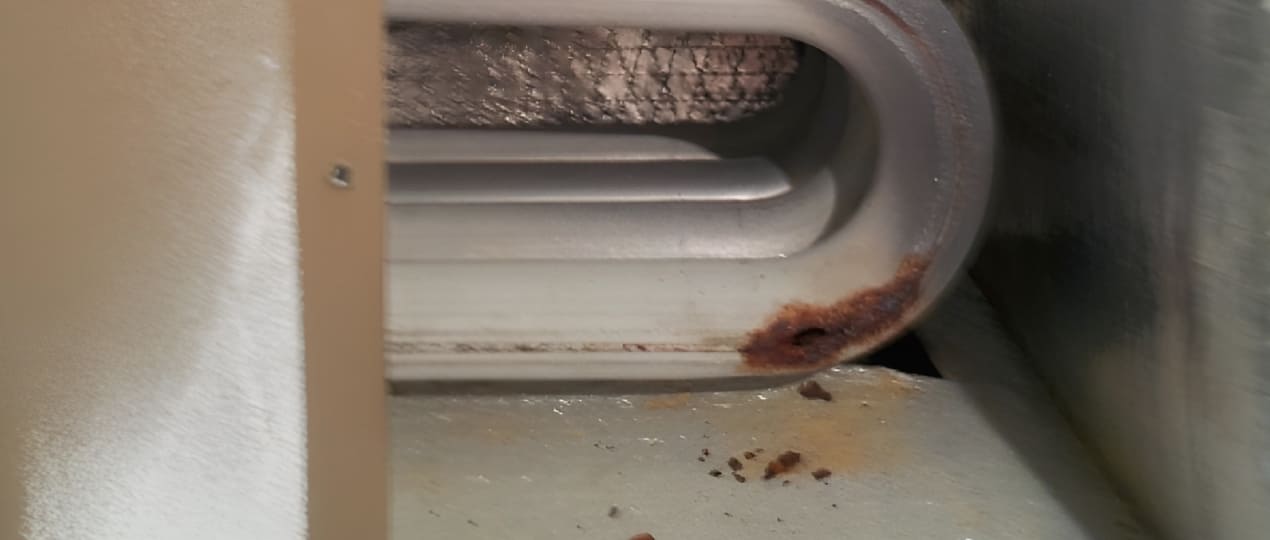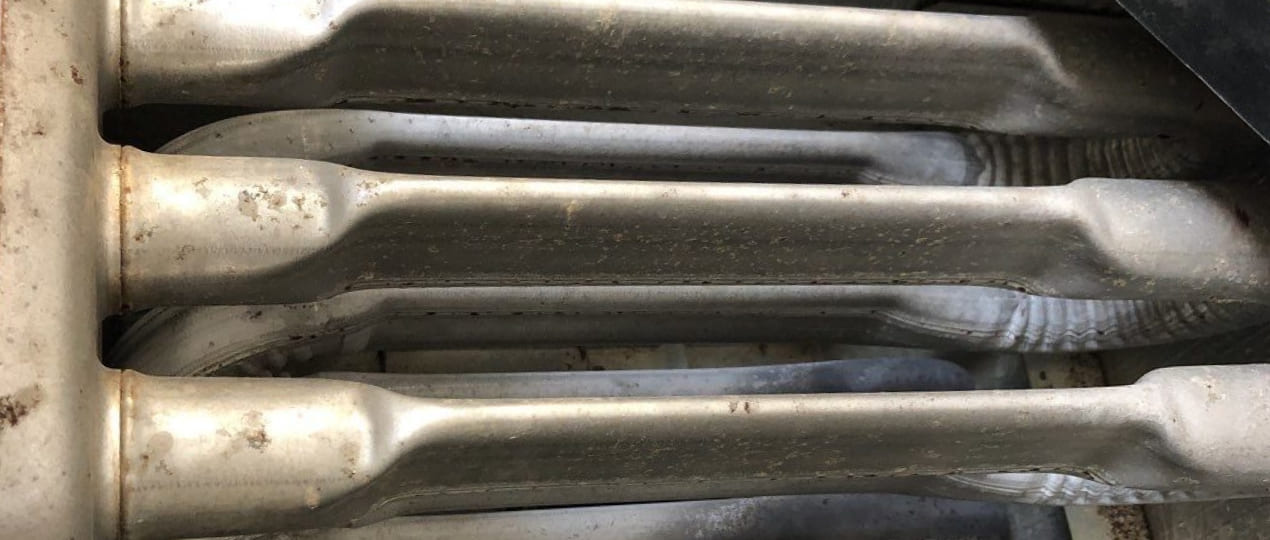
Furnace heat exchangers are a critical component in the operation of your system. They are responsible for transferring warmth to the air circulating through your home. If the appliance fails, it induces not only uncomfortable temperatures but also serious safety menaces such as carbon monoxide exudes. Identifying problems early may save you from expensive repairs and affirm your home stays safe and comfortable.
Let’s explore how to identify cracked heat exchanger furnace symptoms, what causes these issues, and what steps you take to diagnose concerns and ways to solve them. We will also explain when to repair and when to replace thermal transfer devices, and discuss the advantages of contacting a professional like Superior HVAC Service for your maintenance needs.
What is a heat exchanger in a furnace and why is it important?
Knowing what is the heat exchanger in a furnace can help you identify the primary actions in case it is broken. It is a metal component that helps transfer warm air from the burner to the air that circulates throughout your home. Well, how does a furnace heat exchanger work? It works by separating the air from combustion gases and preventing the gases from mixing with the warm air. It warrants that your oven warms your home efficiently without releasing hazardous gases into your living space.
The role of a heat exchanger in your furnace
The temperature regulator is a vital part of your system. It is responsible for warming the air that is pushed through the ducts of your home. The primary function is to warm the air while keeping harmful combustion gases separate from the air supply. If it chinks or gets ruined, these harmful gases can leak into the air, causing severe health dangers.
Here are five key functions that you need to consider:
- Heat transfer It transfers warmth from the combustion process to the air that circulates in your home.
- Separation of gases It keeps harmful combustion gases away from the air you breathe.
- Energy efficiency A properly functioning model ensures that your firebox operates efficiently, using less energy to make your home comfortable.
- Prevents hazardous leaks If the mechanism ruptures, it leaks destructive gases into your home, posing health hazards.
- Air distribution It helps to evenly distribute air through your home’s ducts, ensuring consistent warmth throughout your living space.
It’s crucial to understand because if this component malfunctions, it generates reduced proficiency, higher energy bills, and safety hazards. A crumbling exchanger can frequently be repaired, but sometimes it is better to replace the entire unit depending on the deterioration.
Common signs of a gas furnace cracked heat exchanger
A cracked heat exchanger furnace can be difficult to diagnose on your own, especially since the symptoms regularly resemble other heating controversies. However, it’s crucial to recognize the signs early to prevent further degradation to your heating system and potential safety hazards.
Some of these signs include:
- Uneven heating If you notice certain rooms in your house are colder than others or your furnace is taking longer than usual to heat the home, it could indicate an affair. A compromised device may not distribute heat evenly throughout your home, leading to cold spots.
- Strange noises A cracked heat exchanger oil furnace repeatedly produces strange noises such as popping, rattling, or banging. These noises might be caused by the metal expanding and contracting due to being wrecked. If you hear these noises, it could indicate the mechanism is deteriorating.
- Increased energy bills When the temperature regulator furnace is not working properly, it forces the furnace to work harder to achieve the desired temperature. This augmented workload may bring about higher energy bills. If you notice a major boost in heating costs, it may be due to a malfunction.
- Carbon monoxide leaks One of the most dangerous signs of a failure is the presence of discharges. Carbon monoxide is an odorless, colorless gas that causes grave health issues, such as headaches, dizziness, nausea, and even death. If you suspect a leak, you should immediately evacuate the house and contact a proficient.
- Water leaks In some cases, a furnace heat exchanger crack can trigger water oozes. If you notice water pooling near your firebox or any signs of water damage, this could be a sign that the device is compromised.
If you notice any of the above-mentioned signs, it’s important not to ignore them. A broken heat exchanger furnace can cause long-term damage to your furnace and may pose weighty threats to your health and safety. Promptly contacting a specialist for a thorough investigation can save you from costly revamps and help guarantee your home remains warm and safe.
What causes heat exchanger issues?

The heat exchanger plays a vital role in ensuring your home remains warm and comfortable during colder months. However, over time, various factors may yield to its deterioration, resulting in cracks or other damage. These examinations consistently go unnoticed until they cause major problems.
It’s important to know how to tell if furnace heat exchanger is cracked. Understanding what causes disputes can help you take preventive measures and extend the lifespan of your furnace. Proper preservation and awareness of potential pitfalls are essential to avoid costly rebuildings and assure the system operates efficiently.
Wear and tear over time
It is subjected to continuous heating and cooling cycles, which can cause the metal to expand and contract. Over time, this constant thermal cycling can weaken the metal and lead to clefts or corrosion. This is one of the most common causes of failures and breakdowns. Additionally, prolonged exposure to high temperatures can cause metal fatigue, further compromising the structure and integrity. Regular conservation can help detect these issues early, reducing the risk of significant damage and ensuring the furnace operates efficiently.
Lack of regular maintenance
Furnaces need regular management to confirm that they are operating at peak capability. Without regular appraisals, problems like blocked heat exchanger furnace or buildup of dust and dirt occur, which contributes to overheating and eventual damage. Dirty filters, clogged vents, and other sustenance challenges cause stress on the firebox and the heat exchanger, leading to chips or corrosion.
Poor airflow or dirty filters
If the airflow through your fireplace is restricted, it causes the furnace to overheat. Blocked heat exchanger is common when the filters are not changed regularly. Dirty filters impede airflow, which makes the fireplace work harder and puts extra stress, increasing the likelihood of cracks.
How to identify furnace heat exchanger problems
Identifying problems early saves you from expensive reconditions and prevents unsafe situations, such as carbon monoxide bleeds. Regularly inspecting your fireplace is an essential part of home servicing, especially before the colder months arrive. While some complications may require an accomplished technician, there are a few simple steps you need to follow to know how to check heat exchanger on furnace yourself. By learning how to spot potential problems, you certify your furnace runs efficiently and safely for years to come.
Visual inspection for cracks or corrosion
A visual assessment is an effective way to look for cracks, rust, or other signs of corrosion. A fractured or harmed technology will periodically have visible holes or cracks. You may also notice rust or discoloration, which is another indicator of deterioration. If you spot any of these issues, it’s best to call a master who knows how to clean furnace heat exchanger and possibly replace the heat exchanger.
Warning signs of carbon monoxide leaks
If you notice any unusual smells or experience symptoms like headaches, dizziness, or nausea, these could be signs of a leak from a cracked oil furnace heat exchanger. Carbon monoxide is a solemn threat, and if you suspect a leak, you should immediately evacuate the house and call an HVAC proficient to inspect your furnace heat exchanger leaking water.
Uneven or inconsistent heating
A furnace with an impaired heat exchanger stove may not warm the home evenly. If certain rooms are colder than others, or if the furnace seems to be running continuously without reaching the set temperature, it could be a sign of a malfunction.
Strange noises coming from your furnace
Rattling, banging, or popping noises from your furnace are occasionally a sign that this part of your heater is defective. These noises occur as the metal expands and contracts. If you hear any unusual sounds coming from your appliance, it’s worth having it inspected by an authority.
Can a heat exchanger furnace cracked be repaired?

When faced with a difficulty, homeowners on a regular basis wonder if renovation is a viable option or if a complete replacement is necessary. The decision depends on several factors, such as the extent of the fault, the age of the furnace, and the cost of fixes versus replacement. Although it is technically possible to amend a chipped model, it’s habitually not the most cost-effective or safe solution.
The key factors to consider when deciding between adjustment or replacement:
- Extent of the damage Minor splits might be repairable, but larger ones often require replacement.
- Age of the furnace Older units may not justify the cost of patching up.
- Safety concerns Splintered appliances give rise to perilous emissions.
- Cost of repair vs. replacement Amending might be cheaper short term, but replacement makes certain long-term reliability.
- Energy efficiency A new device improves functionality, reducing long-term energy bills.
Understanding the potential uncertainties and benefits of both options help you make an informed decision about how to proceed with your furnace.
Why repairing a cracked heat exchanger is risky
Repairing a crack might be tricky and unsafe. Even if the crack is sealed, the heat recovery unit may not be restored to its original condition. Additionally, it poses urgent vulnerabilities to your safety, as carbon monoxide still leaks into your home. For this reason, overhauling a shattered temperature regulator is not recommended unless it’s a minor setback.
When to consider heat exchanger replacement
In most cases, replacing the entire appliance is the best solution. A cracked furnace heat exchanger affects the optimum use and escalates the risk of precarious gas seeps through. Replacing affirms that your stove runs safely and efficiently, preventing further mutilated and health challenges. If your device is beyond amendment, the replacement process should be done by a qualified technician who validates the job is done safely.
Key takeaways
Such difficulties are grave and trigger reduced productivity, higher energy bills, and threatening exudes. It’s essential to recognize the symptoms of a crevice, such as uneven heating, strange noises, and signs. Regular upkeep helps prevent these matters and establish your furnace runs smoothly.
If you suspect a break or some related trouble, it’s important to act quickly. Furnace heat exchanger crack symptoms lead to safety hazards, and waiting too long to address it may result in costly adjustments. Contacting a practitioner like Superior HVAC Service secures that your furnace is properly inspected, diagnosed, and fixed.
For more information on obstacles or to schedule a review, don’t hesitate to contact Superior HVAC Service today. We specialize in inspecting and replacing appliances, providing you with peace of mind and the assurance that your stove is operating at its best.
REFERENCES
1. Rackley, K., Long, D., Alhassan, H., Bullinger, H., Schimmels, J., Krause, M., Pfeifer, Z. (2021). Furnace heat exchanger.
https://openresearch.okstate.edu/entities/publication/44e62161-2fac-4ee2-9763-e35418995cfd
2. Vakylabad, A. B. (2023). Heat generation and exchange systems safety: furnaces, heat exchangers, reformers, etc. In Crises in Oil, Gas and Petrochemical Industries (pp. 77-124). Elsevier.
https://www.sciencedirect.com/science/article/abs/pii/B9780323951630000013



